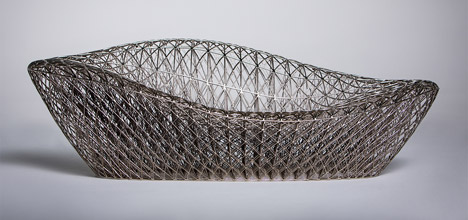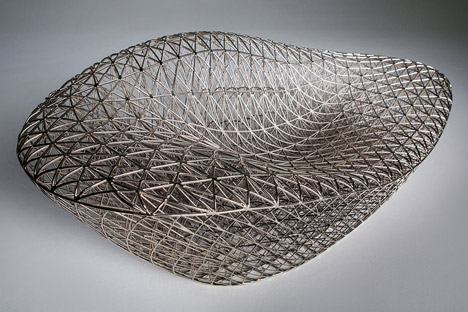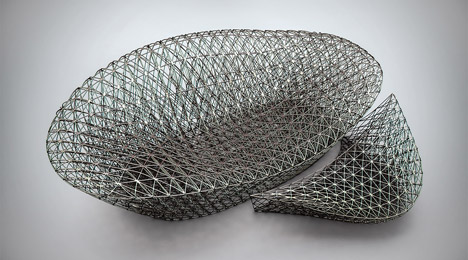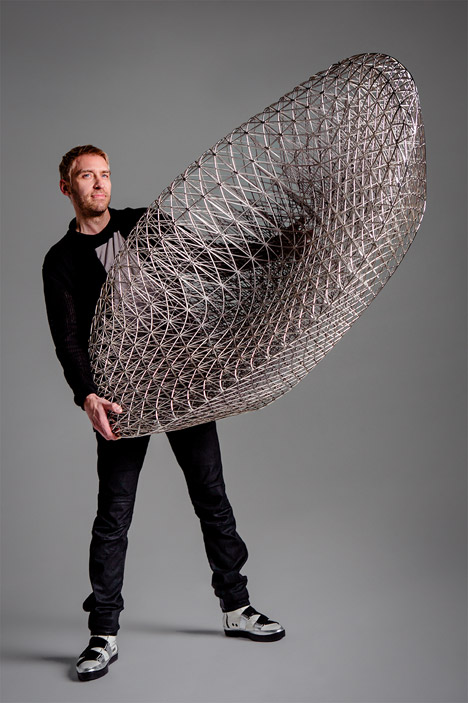Janne Kyttanen builds 3D-printed sofa from a minimal mesh
3D-printing pioneer Janne Kyttanen has used the structures of spiderwebs and silkworm cocoons to inform the design of a sofa that he printed in a single piece.

Kyttanen used just 2.5 litres of resin material for the mesh design of the 1.5-metre-long lounger called Sofa So Good.
The designer, who is a senior creative fellow at specialist tech company 3D Systems, used computer software to create the geometric diamond mesh that could be manipulated and smoothed into the curving shape of the seat.

The mesh is configured to provide maximum strength from as little material as possible, mimicking the layouts of natural structures like spiderwebs and silkworm cocoons.
"With 3D technology, we can express forms only found in nature," Kyttanen said.
The prototype sofa was created on 3D Systems' ProX 950 SLA device – a stereolithography machine that builds up the shape from a photo-reactive resin by curing it with a UV laser.

Over several days, 6,000 layers each measuring 0.0099 centimetres thick were laid down on top of each other to form the sofa.
Copper and chrome plating was added after production to achieve the desired finish but keep the design lightweight. The final product weighs 2.5 kilograms and can hold up to 100 kilograms in weight, according to the designer.

By using less material, Kyttanen hopes to minimise energy consumption and reduce transportation costs for furniture production.
"How much material would we be able to save from products and building materials if we could manufacture like this?" he said. "There's a whole range of benefits we can't even fathom today."
As the co-founder of design studio Freedom of Creation and former creative director of 3D Systems, Kyttanen was an early champion for 3D printing. He has previously unveiled a range of potential uses for the technology, including printed food and clothing that can be built on desktop machines.